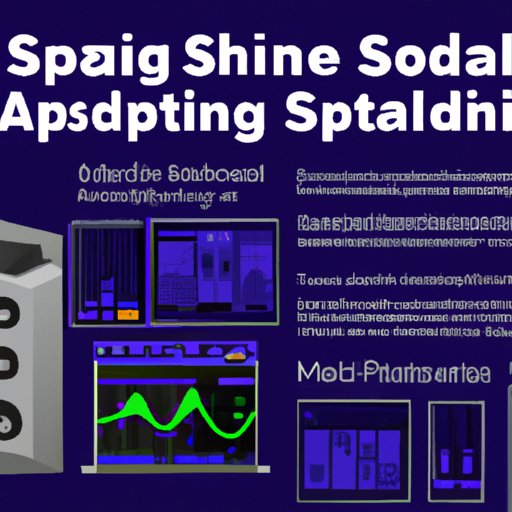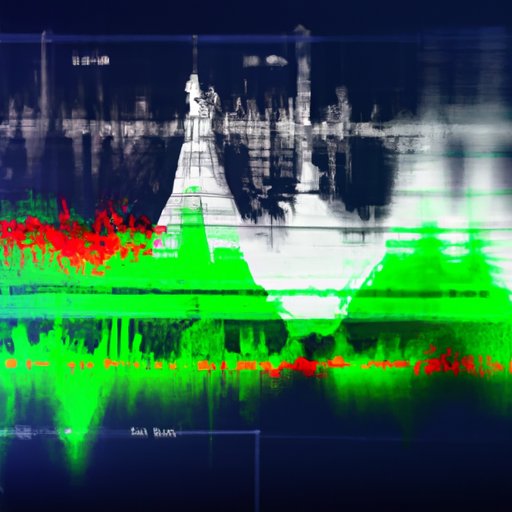Introduction
Spatial audio is a revolutionary sound technology that has gained traction in recent years due to its ability to create immersive and realistic soundscapes. Spatial audio utilizes sophisticated algorithms and mathematical equations to create a three-dimensional sound experience, allowing listeners to feel as if they are actually present in the environment. This type of audio technology has been used in various industries such as music production, gaming, and film and television.
Exploring the Basics of Spatial Audio: How It Works and Its Benefits
The physics behind spatial audio is complex, but the basic idea is simple. The sound is divided into multiple channels which are then recombined to create a 3D space. Each channel contains different frequencies that are directed to specific locations in the environment. This creates a sensation of depth and directionality, as if you were actually inside the environment.
In addition to the physics, mathematics also plays an important role in spatial audio. In order to create a realistic 3D soundscape, algorithms and equations must be used to calculate the precise angles, amplitudes, and frequencies of each channel. These calculations determine the directionality of the sound and help to create an immersive experience.
An Overview of Spatial Audio Technology: What Is It and How Does It Work?
There are several types of spatial audio technology available today. Some of the most popular include Ambisonics, binaural recording, and wave field synthesis. All of these technologies utilize the same basic principles of physics and mathematics, but each one offers its own unique advantages and disadvantages.
For example, Ambisonics is a type of spatial audio technology that uses four or more microphones to capture sound from all directions. This allows for a more realistic sound experience and can be used to create realistic surround sound systems. Binaural recording is another type of spatial audio technology that utilizes two microphones to record sound from two different directions. This technique is often used to create a realistic stereo sound experience.
Finally, wave field synthesis is a type of spatial audio technology that uses multiple loudspeakers to create a 3D soundscape. This technique is often used in movie theaters and other large venues to create an immersive experience.

A Guide to Using Spatial Audio in Music Production and Gaming
Using spatial audio in music production and gaming can have many benefits. For example, producers and gamers can use spatial audio to create a more immersive experience and give their audiences a better sense of depth and directionality. Additionally, using spatial audio can help to reduce the amount of noise pollution in certain environments, making it easier to focus on the music or game.
When using spatial audio in music production and gaming, there are several techniques that can be used to create an immersive experience. One of the most common techniques is to use panning to move sounds between different speakers or headphones. This technique can be used to create the illusion of movement or to create a feeling of distance between different sounds. Additionally, producers and gamers can use reverb and delay effects to add a sense of depth and realism to the soundscape.
Analyzing the Impact of Spatial Audio on Film, Television, and Virtual Reality
The use of spatial audio in film, television, and virtual reality has been growing in recent years. Spatial audio technology can be used to create a more immersive experience in these mediums, allowing viewers to feel as if they are actually present in the environment. Additionally, spatial audio technology can be used to enhance the sound design of a scene, making it more realistic and adding more depth to the story.
For example, the 2019 film “Ad Astra” utilized spatial audio technology to create a realistic soundscape. The sound design team used multiple microphones and loudspeakers to capture and recreate the sound of space, giving viewers an immersive experience. Similarly, the video game “Half-Life: Alyx” utilizes spatial audio technology to create an immersive virtual reality experience. By using spatial audio, the game designers were able to make the environment feel more realistic and believable.
Conclusion
Spatial audio is a revolutionary sound technology that offers a multitude of benefits for music production, gaming, and visual media. This technology utilizes physics and mathematics to create a three-dimensional sound experience, allowing listeners to feel as if they are actually present in the environment. Additionally, spatial audio technology can be used to create more immersive experiences in film, television, and virtual reality. Overall, spatial audio is an incredibly powerful tool that can be used to enhance any soundscape.
In conclusion, spatial audio is a revolutionary technology that offers a multitude of benefits for various industries. By utilizing physics, mathematics, and sophisticated algorithms, spatial audio technology can create an immersive 3D soundscape that can be used to create more realistic and believable experiences. Whether it’s used for music production, gaming, or film and television, spatial audio is an incredibly powerful tool that can be used to enhance any soundscape.
(Note: Is this article not meeting your expectations? Do you have knowledge or insights to share? Unlock new opportunities and expand your reach by joining our authors team. Click Registration to join us and share your expertise with our readers.)
